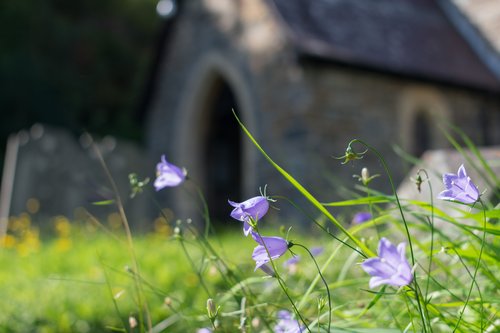Revitalising Churchyard Biodiversity
A Welsh initiative for sustainable grassland management has produced some positive outcomes. Andrea Gilpin, Ecologist at Caring for God’s Acre, outlines the results.
![Bodiversity Hotspots [recording, St Michaels, Llandre]](https://stdavids.contentfiles.net/media/images/Bodiversity_Hotspots_recording_St_Michaels_Lla.width-800.jpg)
Between October 2020 and March 2023, the Biodiversity Hotspots Across Wales initiative took place, funded by Natural Resources Wales and Caring for God’s Acre (CfGA). Managed by CfGA across Wrexham, Flintshire, Denbighshire, Ceredigion, and Powys, the project aimed to support churchwardens and other burial ground managers in enhancing grassland biodiversity within their sites.

Churchyards, often the oldest enclosed spaces in a parish, town, or city, host grassland that has remained relatively undisturbed for centuries. The gradual, natural re-seeding over an extended period has given rise to a diverse ecosystem of grasses, flowers, and animals. These ancient grasslands, once abundant across the UK, have now become a rarity. Churchyards are now sanctuaries or 'Noah’s Arks' for this diminishing habitat.
The project yielded great results, thanks to the dedication of churchwardens and other local volunteers:
- The project supported 80 volunteer champions dedicated to fostering biodiversity in their sites.
- Over 50 grassland surveys of burial grounds were conducted, providing valuable insights into the existing biodiversity.
- A total of 15 training workshops were delivered, empowering churchwardens and burial ground managers with the knowledge and skills needed.
- Over 90 Biodiversity Management Briefs were developed, serving as essential guides for grassland management.
- Through the project, over 20 exemplary sites were identified as best practice models for biodiversity conservation within churchyards.
- Four informative mini films were produced, shedding light on the importance of churchyard biodiversity.
- 22 churchyards were identified as seed donor sites - a crucial step towards identifying which places had the potential to help restore flower rich areas elsewhere in the area.
- Case studies were completed, providing valuable examples of successful biodiversity enhancement in churchyards.
A separate project, Welsh Burial Grounds for Wildlife, funded by the Prince of Wales’ Charitable Fund, ran at the same time. It produced freely available online resources, including guides on ancient and veteran trees, flower-rich meadows, lichens, and amphibians and reptiles, presented in both Welsh and English.
The achievements and resources stemming from these initiatives are not only useful for the communities directly involved in the project but they also provide a blueprint for similar projects in other parts of Wales.
The resources and knowledge generated during these initiatives are accessible on www.caringforgodsacre.org.uk, and questions or advice requests can be directed to andrea@cfga.org.uk.